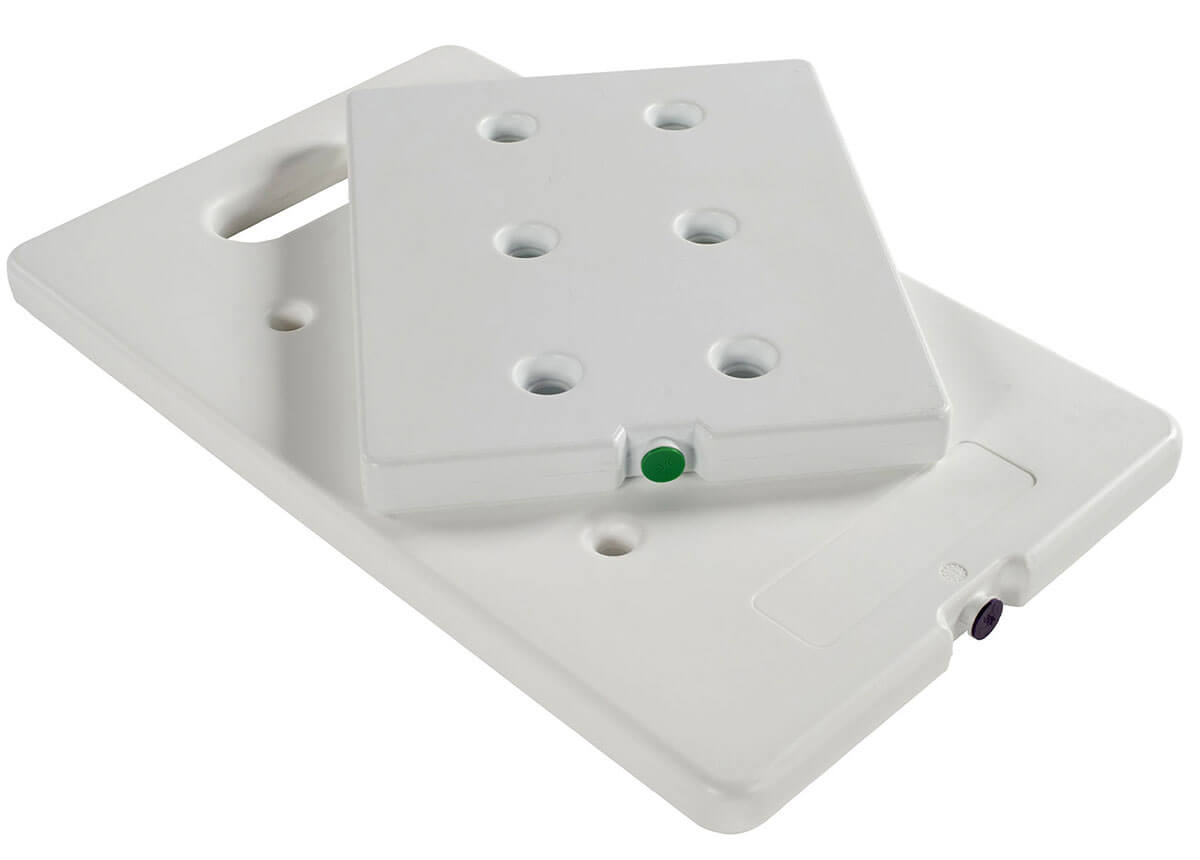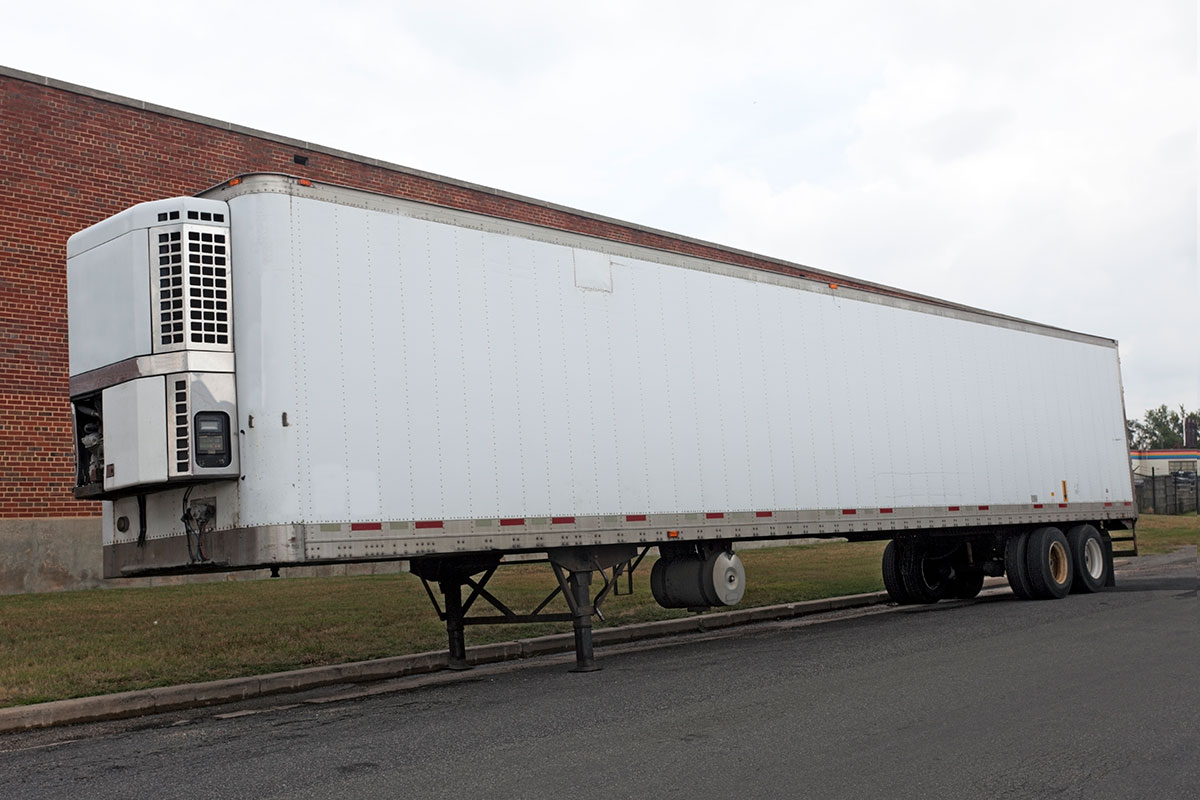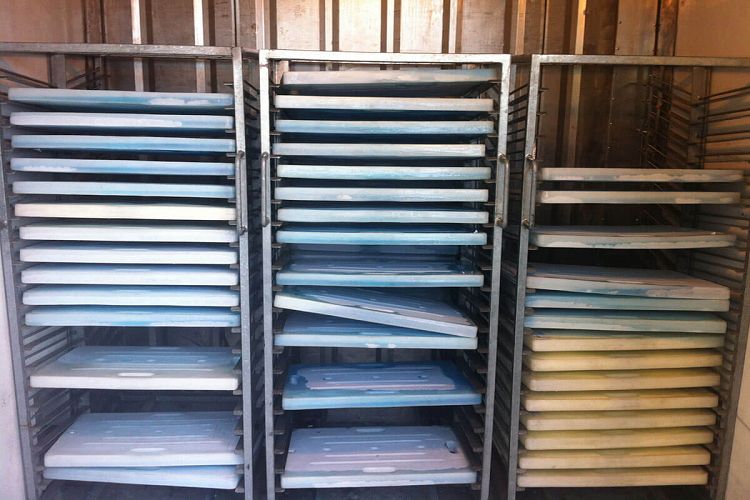 Eutectic plates are designed to maintain various temperatures for different stages of the operation. The sealed panels of eutectic gels are frozen to ensure effective insulation throughout the transportation process.
Eutectic plates are designed to maintain various temperatures for different stages of the operation. The sealed panels of eutectic gels are frozen to ensure effective insulation throughout the transportation process.
As with most products in the cold chain, maintaining accurate temperature levels is essential to ensure the goods arrive in the best condition. Freezer Plates are added to consignments of products stored in insulated containers or transported in trucks. In some cases, they can increase transportation times by up to 24hrs and are highly recommended by CE / DIN and European directives.
How to freeze eutectic plates?
So, we know the benefits of using Eutectic Plates, but what is the best method of freezing them in the first place?
The use of Eutectic Plates and other Phase Change Materials (PCMs) provide considerable cost savings when used in the cold chain by providing increased longevity, but to make them work from a business point of view, you must have an effective process in place for freezing the plates.
It’s essential to have a fast and efficient means of freezing your Phase Change Materials (PCMs). CRS has had many customers approach us for a solution, and we have been shocked at the outdated, costly methods they had in place for freezing.
Our recommendation for effective freezing of eutectic plates is to use a Blast Freezer equipped with 1 or 2 powerful refrigeration units to provide the cooling capacity required to remove the heat from the plates as fast as possible. In order to provide the best recommendation on the size of the chamber and the cooling capacity required, it’s also vital to calculate the load times of the Eutectic plates in use.

Blast Freezers
A Blast Freezer is a fantastic investment for any business with the need to cool or freeze large quantities of goods quickly. Commonplace in the catering and restaurant industries, these commercial chillers also offer significant advantages to any cold-chain business.
CRS offers a range of Blast Freezers varying in capacity and performance. Blast Freezers have very high-capacity cooling units and can rapidly get down to temperatures which can be maintained for long periods of time, ensuring the preservation of the goods stored.
Learn more about our Blast Freezers range.
Cloud-Based Temperature Monitoring
Reliable temperature control is essential for many industries. When relying on efficient storage of eutectic plates to keep the cold chain moving, it’s even more crucial.
CRS are proud to work alongside Rmoni using their components in our installations. The cloud-based temperature monitoring systems from Rmoni provide complete peace of mind that if there is any change within the freezer, an alarm will be raised.
Main features include:
- Full alarm capabilities with HACCP-compliant and auditable reporting.
- A time-saving and cost-efficient alternative to manual measurements.
- Ready-to-use reports for both internal audits and regulatory authorities.
- Cost-Efficient, Easy-to-Use Remote Temperature Monitoring.
Learn more about temperature monitoring here.
Load Calculation
Now, it would be silly to assume that the same level of efficiency was applicable to anything that was stored within the Blast Freezer. That’s why here at CRS, we recommend running our Load Calculation Software on the number of Eutectic Plates that are to be stored.
The calculations generated will enable us to configure the Blast Freezer with the correctly sized cooling unit(s) ensuring the fastest possible cooling times and the highest level of efficiency.
Learn more about our efficient approach to freezing.
The benefits of freezing Eutectic Plates and other Phase Change Materials (PCMs) correctly are huge. Not only will the freezing time be reduced, but it will also be more efficient than other methods using less power. Another of the highly attractive benefits was proven on a recent project. Where the cost of hiring a Blast Freezer from CRS was significantly less than that of the previous method used.
You can learn more about this project here.
It’s also important to note that further improvements can be achieved through best practice in storage and maintenance of your Eutectic Plates. We have compiled a handy guide for your reference here.
How to freeze eutectic plates.
- Ensure as much of the plate as possible is exposed to the cold air stream, the more surface area of the plate that is exposed then the faster the heat will be removed
- Always use trolleys or racks or blast freezing pallets to keep the plates separated
- Never stack plates directly on top of one another as this reduces the amount of surface area exposed
- Always use ventilated pallets or ventilated shelving systems to increase air circulation around the plates
- Don’t block the cold air circulation from the outlet on the refrigeration unit(s)
- Keep the loading door closed as much as possible to avoid the ingress of warm moisture-laden air, the moisture in the warm air will turn to ice inside the blast freezer and slow down the cooling process.
- Empty the blast freezer and move product as soon as the target temperature is achieved. The hard work has been done when the eutectic solution has changed state from a liquid to a solid so if the plates are not required for use straight away then its best to move them to a holding freezer for storage so that the blast freezer can be loaded with warm plates for the next cycle
- Get to know your cooling times- if you always load the plates into the blast freezer the same way then cooling times should be consistent, this will allow you to set up regular cycles throughout the day.
- Fully defrost and thaw out your blast freezer regularly, this process removes any excess ice that has formed inside the chamber and on the fins of the cooling unit heat exchanger so that the air can circulate properly again. It's best to do this daily at the end of every shift or weekly if daily is not possible because the ice could continue to build up and block off the cold air stream
How not to freeze eutectic plates.
So, where were so many of our clients going wrong? Let’s take a look at some of the things to avoid when freezing Eutectic Plates. We’re not saying that these do not work, just that they lack the merit of an efficient solution comprising of a Blast Freezer with adequate temperature monitoring.
Using Freezer Coldrooms (Holding Freezers)
To avoid thermal abuse of other products already in the freezer, blast freezing of plates should always be done in a separately in a segregated freezer room, you shouldn’t allow warm plates to be loaded into a freezer containing already frozen food products.
Freezer rooms don’t have the cooling capacity required to pull the heat quickly from eutectic plates, the refrigeration units in a holding freezer are designed to maintain the temperature in the room only and will be working harder than normal and outside of their design specifications if they are used for blast freezing purposes.

Refrigerated Trucks
The use of refrigerated trucks is a common solution for many business. However, they can take a very long time for the temperatures to get down to a sufficient level to freeze the plates. In many instances they cannot achieve the temperatures required for adequate freezing, sub -25ºC.
Not only are refrigerated trucks inferior to blast freezers in terms of performance, they have also proven more expensive to run, We have also seen that in some instances our Blast Freezer solutions are cheaper on a hire basis.














